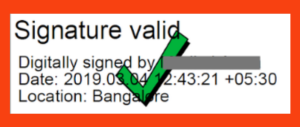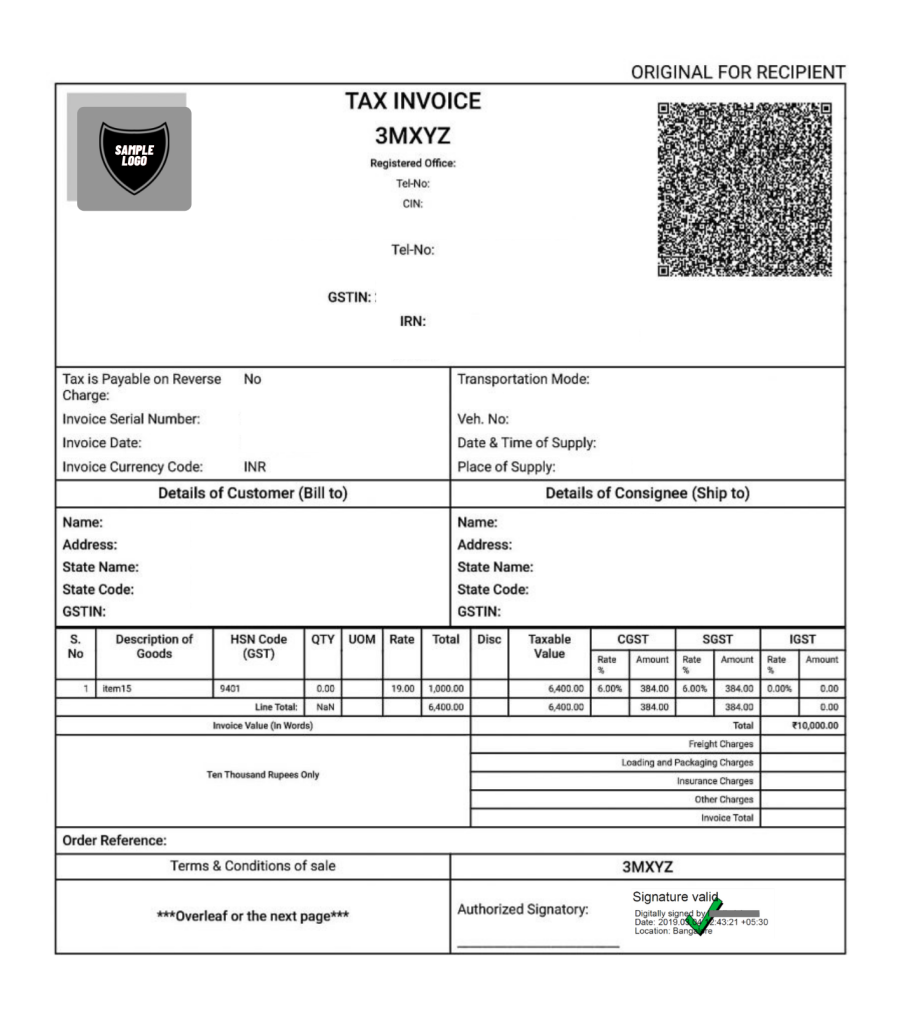
If you’re still pen signing your documents, you’re sitting on a time bomb.
Signature forgery is a serious security problem for all industries on the planet. And, recent studies suggest signature frauds cost banks about $900 million per year.
Considering this, Digital Signatures remain the only effective solution.
The idea is to drop the traditional pen-paper signing and switch to a digital alternative.
To be precise, having a digital signature for your business is like having an insurance plan. It’s less risky and gives you a good night’s sleep.
So, let’s understand EVERYTHING there is to know about Digital Signatures! and dive into it, as deeply as possible.
Ready?
Let’s go!
Digital Signatures ensure the security & integrity of the data recorded into a blockchain. Similar to handwritten signatures, digital signatures relate to an entity or person with digital information.
Moreover, it is evident that businesses today count on digital signatures to prevent fraud and other complications. These are lethal to the company and can leave them in a sorry state. Additionally, businesses with frequent Email usage prefer using digital signatures above all else.
Another reason for companies to choose Digital signatures is the basic purposes they serve. Companies encounter software distribution, financial transactions, etc daily and digital signatures make them quick, smooth, and easy.

The way they bind the signer in a recorded transit.
Meaning, apart from being digital, these signatures store the information regarding the date of signing, expiry, location, etc. Additionally, you’ll be able to view all the verified details of the signer along with the above-mentioned info.
These details add an extra layer of security and authenticity thus significantly reducing the chances of fraud.
And, these features compel the topmost companies to adopt digital signatures asap.
In fact, finance sectors heavily rely upon digital signing as they consider manual signing important yet boring. And, digital signatures tend to save them significant time and effort.
Now, let’s understand how digital signatures work. Imagine Joe wishes to send a digitally signed document to Emma.
To illustrate this example, we are going to use:
1) A document to be certified
2) A hashing algorithm,
3) A summary based on the content of the document.
4) A public key
5) A private key, and
6) Its algorithms.
Now, bear in mind that Joe has two keys that come in the form of random numbers and characters- a private key and a public key.
The private key must always be private. But to be able to digitally sign a document for Emma, Joe must share his public key with her. After which she will verify the authenticity of the document and the signature.
Understand this, When Joe sends the document, a hashing algorithm processes its contents. This algorithm creates a unique sequence of numbers and letters called “digest” (summary).
Then this “digest” is encrypted with Joe’s private key which finally results in the digital signature of the document.
In a nutshell, a digital signature is the combination of the content of the certifying document and the author’s private key.
Any variation in the contents of the document, or in Joe’s private key, will create a different signature. Hence, Emma can reverse this process and verify the document and the digital signature’s legitimacy.
She can also process the document through the same hashing algorithm that Joe previously used and get a “digest”. Note, altering the document would change the “digest”.
Also, remember how Joe processed the summary with the algorithm of the private key to create a digital signature?
Emma too can decrypt the digital signature with the algorithm of Joe’s public key to get a summary!
Again, if no alteration takes place, the signature’s summary will also be the same.
Finally, this leaves Emma with two summaries-one based on the digital signature, and another on the contents of the document.
If the two summaries match, then the message was not altered in any instance and she can verify that Joe is the true author.
Therefore, digital signatures are one of the key elements to secure information on the blockchain to guarantee its immutability.
Digital Signature Certificates consist of 3 types namely- Class 1, Class 2 & Class 3. These types cater to various purposes.
Class 1 digital signatures apply to individuals and professionals alike. They verify the user’s name and E-mail address from the Certifying Authorities’ database. Meaning, they confirm that the subscriber’s info matches with the consumer’s database. Although you can rely upon Class 1 certificates for basic assurance levels, they aren’t of great help.
Class 2 signatures to work for personal and private individuals. In fact, like class 1 digital signature, these too confirm that info provided by the subscriber does not contradict the information available in the consumer database.
Class 2 digital signatures are relevant to environments where data compromise risks are moderate. These also include transactions with substantial monetary value, fraud, or access to private information.
With effect from 01.01.2021, the Controller of the Certifying Authority will discontinue the issue of Class 2 Certificates and replace them with Class 3 Certificates.
Class 3 certificates are great for providing high assurance levels. They are perfect for individuals and organizations.
The physical verification process makes Class 3 digitals signatures stand apart. A certifying authority verifies the identity of the issuer and thus validates it.
Needless to say, such robust security measures favor e-commerce companies the most.
Online participation/bidding in e-auctions and online tenders across India requires these certifications. Also, a vendor who wants to participate in an online tender must have a Class 3 digital signature certificate.

When you sign your documents with a digital signature, it validates the identity with a green tick. That serves as a clear Demarcation that this document is safe to use.
Other than that, with LTV and time-stamping features, you also can track the date of signing and expiry.
This information is available only after the parties after a detailed PKI verification.
You know, a picture speaks a thousand words. So, when a digital signature displays a green tick along with time and location stamps, it becomes more reliable than a traditional signature.
The green tick will not appear if the identity of the signer isn’t verified. This verification standard helps companies and in fact, the government too to display their authenticity.
Yes, don’t worry, digital signatures are legally valid in India.
With the enactment of India’s Information Technology Act, 2000, digital signatures are now considered legally valid.
The DSC or the Digital Signature Certificate is a mandatory requirement for you to get yourself a valid digital signature. This will be issued by a Licensed Certifying Authorities (CA) under the Ministry of Information Technology.
Do bear in mind, the CA holds the right to issue, suspend or revoke your DSC.
You can sign a PDF or other document quickly and securely with a digital signature using PDF AutoSigner Pro software.
The PDF AutoSigner software allows users to streamline their routine document signing with unlimited profiles.
And, signing unlimited documents at once saves users time and energy.
But, here’s some great news! Before the purchase, we allow users to experience Pdf Auto Signer Pro with a free trial. Our fanatical user support assists you whenever needed. We strive to understand every customer’s needs and help solve their pain points.
Even though manual signature verification is one of the most common fraud-prevention methods, it is evident that its time consuming and tedious.
Being stuck in a signature forgery incident puts your company’s health, sanity, and reputation on the line.
It’s time, your company adopts a low-risk and high-security policy using digital signatures.
As in today’s fast-paced world, a paperless solution using digital signatures is the way forward.